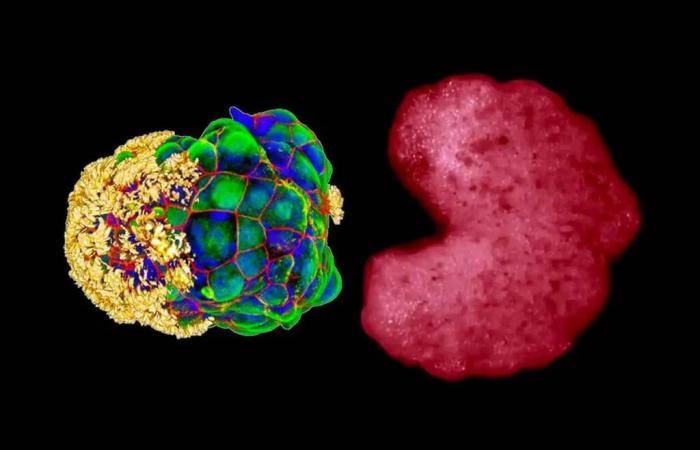For the first time, researchers have demonstrated that after the death of an organism, certain cells continue to function, sometimes even organizing themselves into new multicellular structures. This discovery, led by Professor Peter Noble of the University of Washington and Alex Pozhitkov of the City of Hope Medical Center in California, pushes the boundaries of our understanding of life. They identified this particular cellular state as a “third state,” neither alive nor completely dead.
This phenomenon has been observed in particular in skin cells from deceased frogs which, once placed in the laboratory, are transformed into xénobots. These multicellular structures, far from being inert, demonstrate unusual behaviors, using cilia to move and interact with their environment.
Anthrobots and xenobots: cells that self-organize
In addition to xenobots, researchers have also discovered anthrobotshuman cells, mainly lung cells, which self-organize autonomously into tiny organisms. These structures, as small as a hair, do not just move: they have the capacity to repair damaged neighboring cells. For example, in the event of neuronal damage, these anthrobots can regenerate surrounding tissues.
The applications of these post-mortem cells could revolutionize medicine, opening up prospects for regenerative therapies and biological robots which, instead of plastic or metal, would be composed of living cells, entirely biodegradable.
What makes this third state possible
The ability of cells to survive and reorganize after the death of the organism depends on several factors: temperature, energy availabilityand even the biochemical composition of the surrounding environment. Elements such as the age of the organism, its state of health, and the specificities of its tissues also influence this survival.
Cells enter this third state thanks to internal electrical circuits which, despite the death of the organism, continue to generate communication signals between them. This phenomenon could redefine our view of “legal death” and transform the approach to post-mortem care.
Towards medical and ethical advances?
The emergence of this intermediate state is not only a scientific curiosity; it opens doors to potential medical applications. These post-mortem cells, such as anthrobots, could be programmed to circulate throughout the human body, for example dissolving arterial plaques in patients suffering from atherosclerosis or reducing mucus accumulations in cases of cystic fibrosis.
If the anthrobots et xénobots inspire promising innovations, they also pose serious ethical questions. These organisms derived from dead cells, although programmed to decompose after a period, raise questions about the manipulation of living things and the boundaries between life and death.
This exciting research, still at the beginning of its discoveries, promises to continue to revolutionize our understanding of biology. Watch closely as scientists explore these unexplored frontiers of existence.






